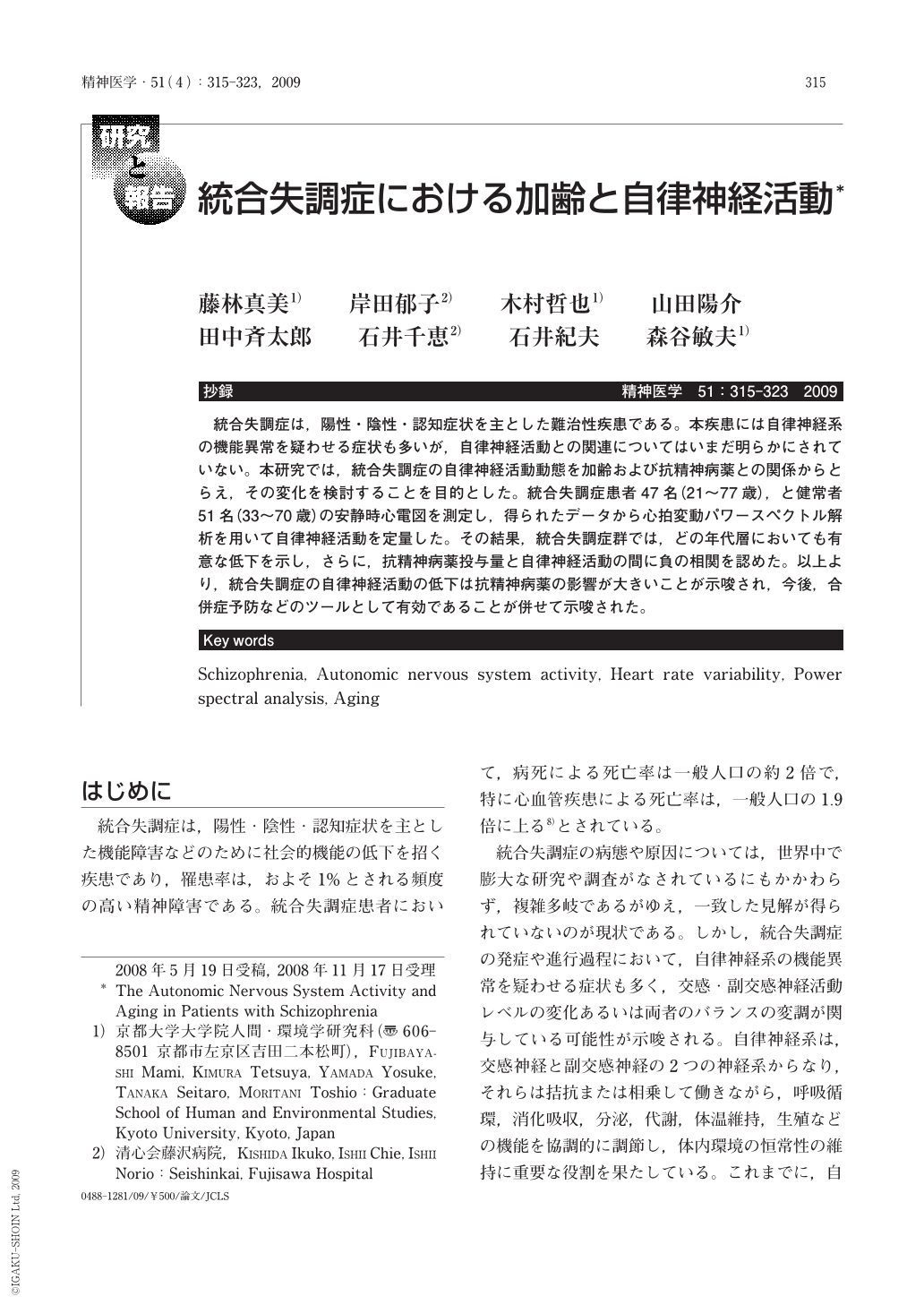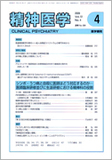Japanese
English
- 有料閲覧
- Abstract 文献概要
- 1ページ目 Look Inside
- 参考文献 Reference
抄録
統合失調症は,陽性・陰性・認知症状を主とした難治性疾患である。本疾患には自律神経系の機能異常を疑わせる症状も多いが,自律神経活動との関連についてはいまだ明らかにされていない。本研究では,統合失調症の自律神経活動動態を加齢および抗精神病薬との関係からとらえ,その変化を検討することを目的とした。統合失調症患者47名(21~77歳),と健常者51名(33~70歳)の安静時心電図を測定し,得られたデータから心拍変動パワースペクトル解析を用いて自律神経活動を定量した。その結果,統合失調症群では,どの年代層においても有意な低下を示し,さらに,抗精神病薬投与量と自律神経活動の間に負の相関を認めた。以上より,統合失調症の自律神経活動の低下は抗精神病薬の影響が大きいことが示唆され,今後,合併症予防などのツールとして有効であることが併せて示唆された。
Schizophrenia is associated with several chronic physical illnesses and patients with schizophrenia have a shorter life expectancy. These risks may be attributable to altered neural regulation of cardiac autonomic activity. The autonomic nervous system (ANS) modulates the internal environment of human beings, and its activity is known to decrease with age in healthy adults. However, whether or not the activity of the ANS is altered with age in schizophrenia patients remains to be elucidated. The aim of our study is to examine whether heart rate variability (HRV), which is considered to bean indicator of the ANS activity, is altered with aging in schizophrenic patients. A total of 47 schizophrenic patients and 51 healthy controls volunteered to participate in this study. The schizophrenic and healthy individuals were divided into 4 groups according to their ages:people under 40 years, those in their 40s, those in their 50s, and those over 60. The ANS activity was assessed under resting conditions by means of HRV power spectral analysis. In the schizophrenia group, the Global Assessment of Functioning scale was used to evaluate the psychiatric severity, and daily doses of antipsychotics were converted to approximate chlorpromazine equivalents using published guidelines. Significant interactions of age and subject group with respect to the activity of the sympathetic nervous system, parasympathetic nervous system, and the ANS as assessed using two-way ANOVA. The ANS activity was significantly lower in the schizophrenia group (p<0.01) than in the control group. Even the youngest subjects in the schizophrenia group showed significantly lower ANS activity than the oldest subjects in the control group. Several theories have been proposed to explain the underlying mechanisms of schizophrenia and its complex web of biopsychosocial factors. Although the causes and consequences of schizophrenia remain to be elucidated, our findings suggest the possibility that altered function of the ANS in patients with schizophrenia could be associated with not only diverse psychosomatic and behavioral symptoms but also antipsychotic drugs.

Copyright © 2009, Igaku-Shoin Ltd. All rights reserved.


